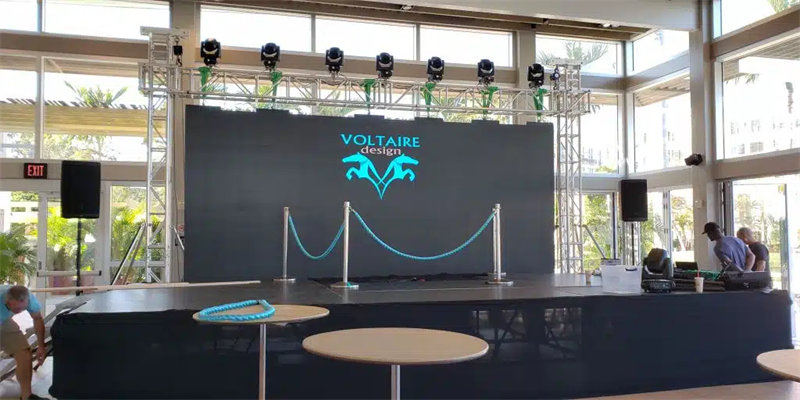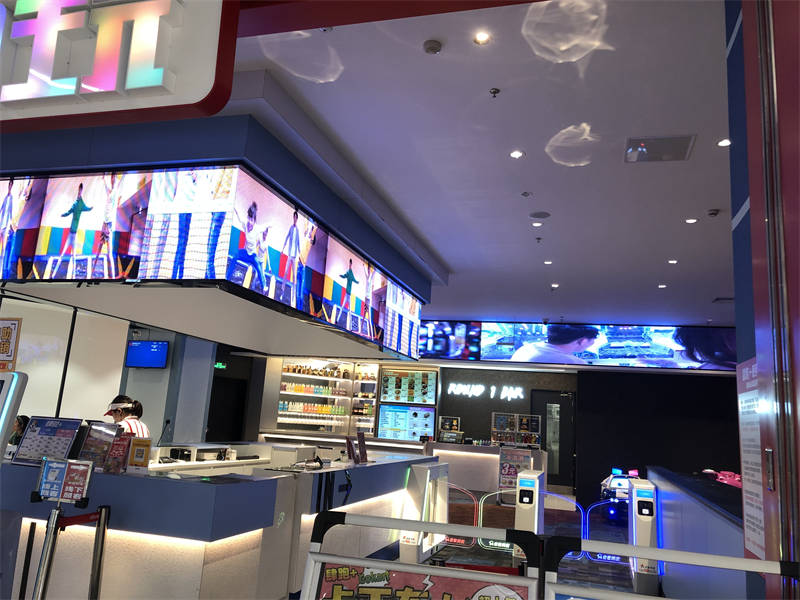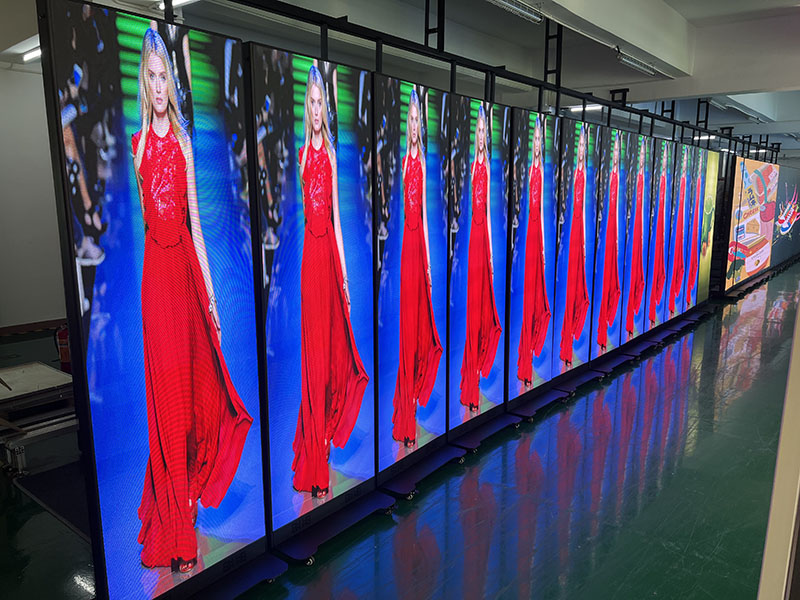When you install an LED display, you may need to calculate multiple parameters, such as: LED display area, brightness, power consumption, resolution, etc. In this post, we will introduce their detailed calculation methods.
Table of Contents
ToggleHow to calculate the resolution of LED screen?
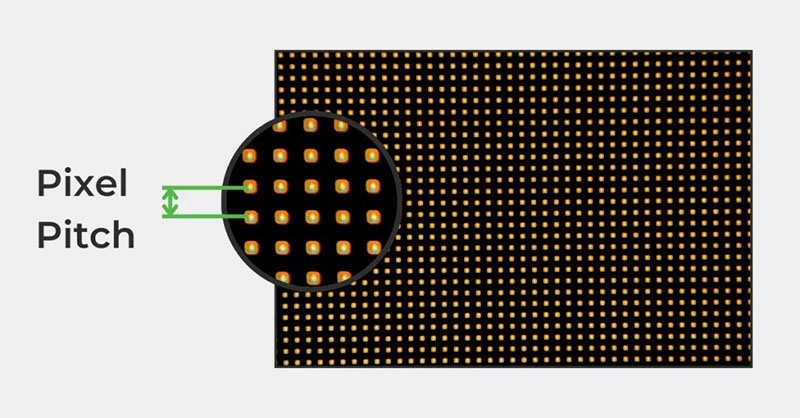
The resolution of an LED display is basically the number of pixels in a given area of the screen. It’s usually measured in pixels per inch (PPI) or the total number of pixels across the width and height of the screen.When you figure out LED display resolution, you need to understand the meaning of “P”.
What is P mean in the LED display?
“P ” refers to the pixel pitch, Therefore, the P’s represent the distance between pixels on an LED display, and the unit is usually millimeters. For example, P2 indicates a pixel pitch of 2 millimeters, while P4 indicates a pixel pitch of 4 millimeters. The smaller the pixel dot pitch, the higher the resolution of the screen and the clearer the displayed image.
At present, in the rental LED display market, indoor P3 (P3.9) is the main LED display, outdoor P4 (P4.8) is mostly used.
The rental market also has P2 and P1 LED display optional, due to the price is more expensive as well as the number of peripheral equipment requirements is more, so P2 and P1 LED display’s popularity is not very high, the rental price of the P2 is also a little more expensive than the P3.
Click here to know more P3 vs. P4 Vs. P5 LED display
LED display resolution calculation method
LED display resolution per square = 1/pixel pitch (unitized as M)/pixel pitch (unitized as M)
For example:
P16 resolution per square = 1/0.016/0.016=3906 DOT (points)
Pixel pitch between each model:
| Point | Pair | Point-to-Point Distance (mm) |
|---|---|---|
| P1 | 526*526 | 1.9 |
| P2 | 385*385 | 2.6 |
| P2 | 345*345 | 2.9 |
| P3 | 256*256 | 3.9 |
| P4 | 208*208 | 4.8 |
With the P3.9 LED display to build a regular screen size:
1 meter of pixel points is: 256;
Calculation formula: m * 256 = pixel points;
Calculating the LED large screen resolution = (LED screen length mm / pixel pitch mm) * (the height of the LED screen mm / pixel pitch mm).
| Configuration | Calculation | Resolution |
|---|---|---|
| 3H * 4L | (3×256)×(4×256) | 768 x 1024 |
| 3H * 5L | (3×256)×(5×256) | 768 x 1280 |
| 4H * 6L | (4×256)×(6×256) | 1024 x 1536 |
| 20L * 5H | (20×256)×(5×256) | 5120 x 1280 |
For other sizes of large LED screen, please use this data to get the exact resolution.
What is the resolution of 1080P?
The resolution of 1080P is 1920*1080; this means that there are 1920 pixels horizontally and 1080 pixels vertically on the screen, totaling about 2073600 pixels;
How much resolution is 2k?
2K resolution refers to a resolution level where the screen or content has a horizontal resolution of about 2000 pixels.
The most common 2K resolution format for video production, displays, etc. is 2560 x 1440 (16:9), also known as WQHD.
Additionally, the most standard 2K resolution is 2048 x 1080, which is a standard set by the Digital Cinema Initiative (DCI). It’s worth mentioning that different apps and devices may use different 2K resolution standards. For instance, high-end cell phones and some devices may use a resolution of 2048×1080, while computer monitors and TVs usually use a resolution of 2560×1440.
What resolution is 4k?
When we say 4K resolution, we usually mean 3840×2160 or 4096×2160.
The exact number of pixels in 4K resolution can vary depending on the situation. In the world of TVs and monitors, 4K resolution typically refers to 3840×2160 pixels.
This means there are 3840 pixels across and 2160 down, making a total of 8,294,400 pixels. That’s four times the resolution of Full HD. In movie theaters, 4K resolution means 4096 x 2160 pixels, which is the standard used in digital cinema.
| Panel Type | Screen Size (m) | Resolution |
|---|---|---|
| P3.9 | 15.0L x 8.4H | 4K |
| P2.9 | 11.8L x 6.26H | 4K |
The actual size is: 12m(L) * 6.5m(H) ; (4096/345 = 11.8mL; 2160/345 = 6.26);
How much resolution is 8K?
Just to clarify, 8K resolution means 7680×4320 pixels. This resolution is the standard for Ultra HD TVs. It’s four times as many pixels as 4K (3840 x 2160) and 16 times the resolution of Full HD (1920 x 1080). 8K resolution delivers extremely fine image quality, making it suitable for high-quality video and image displays.
| Panel Size | Length (m) | Height (m) |
|---|---|---|
| P3.9 | 30.0 | 16.8 |
| P2.9 | 22.2 | 12.5 |
| P1.9 | 14.6 | 8.2 |
Click here to know more 8K LED video wall
Calculating the LED display screen area
The area of LED display refers to the size of its effective display area, usually measured in square meters. To calculate the screen area of LED display, you need to know the following parameters:
Pixel pitch: The center distance between each pixel point and adjacent pixel points, usually measured in millimeters. The smaller the dot pitch, the higher the pixel density, the higher the resolution, the clearer the display effect, but also the higher the cost. The pixel pitch is usually determined according to the actual application scene and viewing distance.
Module size: Each module contains a number of pixels, is the basic unit of LED display. The module size is determined by the number of horizontal and vertical pixels, usually in centimeters. For example, P10 LED module means that each module has 10 pixel points horizontally and vertically, i.e. 32×16=512 pixel points, and the module size is 32×16×0.1=51.2 square centimeters.
Screen size: The whole LED display screen by a number of modules spliced together, its size is determined by the number of horizontal and vertical modules, usually in meters. For example, a length of 5 meters, 3 meters high P10 LED screen indicates that there are 50/0.32 = 156 modules horizontally and 30/0.16 = 187 modules vertically.
According to the above parameters, the following formula can be obtained:
LED display resolution per square = 1 / dot pitch (unit in meters) / dot pitch (unit in meters)
LED display unit board area = horizontal pixel dots × vertical pixel dots × 0.01
LED display area = number of horizontal modules × number of vertical modules × unit board area
For example:
P16 LED screen resolution per square = 1/0.016/0.016 = 3906 dots
P16 LED screen unit board area = 16 × 8 × 0.01 = 1.28 square centimeters
If P16 LED screen has 5 meters long, 3 meters high, so area = 5/0.256 × 3/0.128 × 1.28 = 468 square centimeters
LED display Area Calculation example:
You can install the right display dimensions based on the site condition. Let’s look at an example.
If a customer wants to install a 110 square meters LED display, which need 3906 pixels per square meter.
We suggest the customer choose a LED display with a 4:3 ratio.
Let’s say the long side is X. Then the short side is 3X /4.
The area formula is length * width = 110 square meters. So, X * 3X /4 = 100 square meters.
X * 3X /4 = 100
X=12.11 M
So the long side is 12.11 meters, and the width is 9.0825 meters.
According to the P16 standard LED module, you can figure out the size of the actual display.
The width is 12.11 meters, so the pixel width is 756.875.
The height is 9.0825 meters, so the pixel height is 567.5. 12.112 meters by 9.088 meters equals 110.074 meters, which is the actual size of the display.
Example 2:
If a customer needs an installation area of 110 square meters, which need 2500 pixels per square meter.
We suggest that the customer choose a LED display with a 16:9 ratio.
Let’s say the long side is X, then the short side is 9X /16.
The area formula is length x width = 110 square meters. So, X x 9X /16 = 100 square meters.
X * 9X /16 = 100
X = 13.984 meters
The long side is 13.984 meters and the width side is 7.866 meters.
If they use P20 standard module.
The W (wide) size is 13.984 meters by 50 pixels, which is 699.2 pixel points. The H (high) side is 7.866 meters by 50 pixels, which is 393.3 pixels. The actual display area is 14.00 meters by 7.88 meters, which is 110.32 meters.
How to calculate the size of a cylindrical LED screen
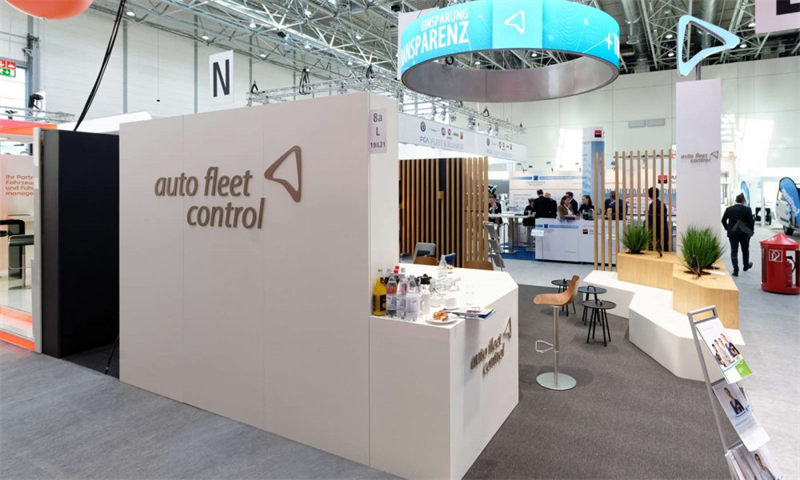
I’m looking for a way to calculate the size of a cylindrical LED screen. To figure out the size of a cylindrical LED screen, you’ve got to think about the diameter and height of the screen. Here are the steps you’ll need to take to calculate the size:
1) You’ll need to figure out the diameter of the cylinder. This is the distance from the widest point on the cylinder.
2) Next, measure the height of the column, which is the distance from the bottom to the top.
3) To figure out the screen size, just use this formula:
π x screen diameter x screen height.
π is the circumference, which is about 3.14159.
For instance, if the cylinder is 2 meters in diameter and 4 meters tall:
Screen Size = 3.14159 × 2 meters × 4 meters = 25.13272 square meters.
Note:
If the screen shape isn’t a standard cylinder, you’ll need to calculate based on the actual situation.
LED display module size Calculation
Take an outdoor P10 LED display with 32 dots*32 dots as an example.
Module (unit board) length size = Pixel pitch x module (unit board) length points module (unit board) width size = Pixel pitch x module (unit board) width points :
P10 module length size = (10×32) mm = 320mm
LED Display screen size calculation
Calculated with 4:3 ratio.
Screen length = 2/3 x square root of [(3 x area)] Screen width = 1/2 x square root of [(3 x area)].
If the LED display area is about 50 square meters
- Screen length = 2/3 × [(3 × square root of 50)] ≈ 8.165m
- Screen width = 1/2 × [(3 × 50) square root] ≈ 6.124m
Calculating with a 16:9 ratio
Screen length = 4/3 × square root of the area Screen width = 3/4 × square root of the area
If the LED display area is about 100 square meters
- Screen length = 4/3 × (square root of 100) ≈ 13.333m
- Screen width = 3/4 × (square root of 100) ≈ 7.5m
Total area of the LED display Calculation
The actual total area = screen modules (total number of panels) x the area of a single module (panel)
If a P10 (32 * 32) LED display project has about 12m long, about 9m high solution:
- module length size = 10 * 32 = 320mm = 0.32m,
- module width size = 10 * 32 = 320mm = 0.32m
- The number of length modules = 12-0.32 = 37.5 ~ 37 screens.
- The number of height modules = 9-0.32 = 28.125 ~ 28 screen
The actual total area = (37×0.32)x(28*0.32)=106.09 square meters
Total module of LED display screen Calculation
The number of length modules = length of the screen/ length of the module.
The number of height modules = the height of the screen body / the width of the module.
The total number of modules (panels) = total area ÷ module (panels) length ÷ module (panels) width
Or (①×②)
If a P10 (32*32) LED display has a length of about 12m and a height of about 9m.
- Module length size = 10 * 32 = 320mm = 0.32m.
- Module width size = 10 * 32 = 320mm = 0.32m
- The length number of modules = 12 ÷ 0.32 = 37.5 ≈ 37
- The height number of modules = 9 ÷ 0.32 = 28.125 ≈ 28
The total number of modules = 37 × 28 = 1036
LED screen cabinet Calculation
- A) The length of the screen = the length of the screen /the length of the unit cabinet
- B ) The height of the screen = the height of the screen/ the height of the unit cabinet
The total area ÷ cabinet length ÷ cabinet height
If a P10 (32 * 32) LED display project has the length of 37 modules, the height of 28 modules:
- The length of the screen = 37 x 320-960 = 12.333~12
- The height of the screen = 28×32:960 = 9.3333 ~ 9
The total number of cabinets = 12×9 = 108
The power of the distribution cabinet Calculation
Power distribution cabinet power = switching power supply power × switching power supply quantity
(Note: There are 40A and 60A2 kinds of power supply)
VVM2.5 arranged 8*6.
Calculate the power distribution cabinet power:
Power distribution cabinet power = (8 × 6) × 200W=9600W≈10KW
Average screen power Calculation
Screen average power = screen maximum power x 33%
VVM2.5 Arrange 8*6, calculate the average power of the screen.
Average power = (8×6)x200W=9600W*33%=3168W=3.1KW
LED display visual distance calculation method
RGB color mixing distance three colors mixed into a single color distance:
Full color LED screen viewing distance = pixel pitch (mm) × 500/1000
Minimum viewing distance:
LED display viewing distance = pixel pitch (mm) × 1000/1000
The most suitable viewing distance:
LED display optimum viewing distance = pixel pitch (mm) × 3000/1000
The farthest viewing distance:
LED display farthest viewing distance = screen height (m) × 30 (times)
For example, P3 cylindrical LED display, pixel pitch is 3mm, then the best viewing distance is 3 x 3000/1000 = 9 meters.
LED Display Brightness Calculation Method
Brightness : The brightness of an LED display is basically how bright it is under certain conditions. It’s usually measured in candela per square meter (cd/m²). The brighter the LED display, the stronger the light, the higher the contrast, and the stronger the anti-interference ability. How bright it is depends on what you’re using it for and how you’re looking at it.
To figure out the brightness of an LED display, you need to know some items:
The brightness of a single LED lamp: It is the intensity of the light emitted by each color of the LED lamp, usually in millicandelas (mcd) as a unit. The brightness of a single LED light depends on its material, process, current, and other factors. Different colors of LED lights have different brightness levels. As a general rule, red LED lights have a brightness of around 800-1000 mcd, green ones are usually 2000-3000 mcd, and blue ones are around 300-500 mcd.
The brightness of each pixel: Each pixel is made up of a number of different colors of LED lights, and the intensity of the light emitted is the sum of the brightness of each color LED light. This is usually measured in candelas (cd) as a unit.
The brightness of each pixel depends on its composition and proportion, and it varies from one type of LED display to another. For instance, a P16 LED screen with two red, one green, and one blue LED lamps has a brightness of (800 × 2 + 2300 + 350) = 4250mcd = 4.25cd.
The overall brightness of the screen: It is the total brightness of all the pixels divided by the screen area. This is usually expressed in candela per square meter (cd/m²). The overall brightness of the screen depends on items like resolution, scanning mode, drive current, and so on. Different types of LED display screens have different overall brightnesses. For instance, a P16 LED screen with a resolution of 3906 dots per square and a scanning mode of 1/4 scanning can theoretically reach a brightness of 4138.625 cd/m².
Based on the above parameters, we can calculate the following formula:
Brightness of single LED display lamp = overall screen brightness × area × number of scans/resolution/number of lamps per pixel
Brightness of each pixel point of LED display = brightness of single LED display lamp × number of lamps per pixel
Overall brightness of LED display screen = brightness of each pixel point × resolution/area/number of scans 625×1×4/3906/4=1.06 cd
Theoretical maximum brightness of each pixel of P16 LED screen=1.06×4=4.24 cd
Examples:
If P16 2R1PG1B (1/4 scanning) outdoor LED screen has 3906 points, The red tube luminous brightness of 800mcd,
- The green tube luminous brightness of 2300mcd,
- The blue tube luminous brightness of 350mcd,
It can be calculated as the square of the theoretical luminance of (800 * 2 + 2300 + 350) * 3906/1000 / 4 = 4150cd
If you know brightness and dot density, how to calculate the brightness of a single LED?
Calculated : (two red, one green, one blue as an example)
- Brightness of red LEDs: Brightness (CD) / M2 ÷ dots / M2 × 0.3 ÷ 2
- Brightness of green LEDs: Brightness (CD) / M2 ÷ points / M2 × 0.6
- Brightness of blue LEDs: Brightness (CD)/M2 ÷ dots/M2 × 0.1
For example: 2500 points per square meter density, 2R1G1B, the brightness of 5000 CD/M2 per square meter, then:
- Red LED brightness: 5000 ÷ 2500 × 0.3 ÷ 2 = 0.3
- Green LED brightness: 5000 ÷ 2500 × 0.6 ÷ 2 = 1.2
- Blue LED brightness: 5000÷2500×0.1=0.2
- Brightness per pixel: 0.3×2+1.2+0.2=2.0 CDs
LED Display Scanning Mode Calculation Method
LED display scanning mode refers to the method by which the display’s control system addresses and illuminates the individual LEDs in the screen. It affects the display’s brightness, refresh rate, and power consumption.
| Display Type | Scanning Method |
|---|---|
| Indoor Single Color LED Display | 1/16 scanning |
| Indoor Double Color LED Display | 1/16 scanning |
| Indoor Full Color LED Display | 1/8 scanning |
| Outdoor Single Color LED Display | 1/4 scanning |
| Outdoor Double Color LED Display | 1/4 scanning |
| Outdoor Full Color LED Display | Static scanning (1/1) |
There are two main types of static scanning: real pixel and virtual. Dynamic scanning is also divided into two types: real image and virtual. The drivers are usually used with China HC595, Taiwan MBI5026, and Japan Toshiba TB62726 models, which typically have a scan rate of 1/2, 1/4, 1/8, or 1/16.
For example:
A common full-color LED module pixel is 16×8 (2R1G1B). If you use the MBI5026 driver, the module uses a total of:
16 * 8 * (2 + 1 + 1) = 512. The MBI5026 is a 16-bit chip, so 512/16 = 32.
1) If you use 32 MBI5026 chips, it’s static virtualization.
2) If you use 16 MBI5026 chips, it’s dynamic 1/2 sweep virtualization.
3) If you use 8 MBI5026 chips, it’s dynamic 1/4 sweep virtualization.
If you connect the two red lights on the board in series, you’ll get the following results:
4) With 24 MBI5026 chips, you’ll get a static real pixel.
5) With 12 MBI5026 chips, you’ll get a dynamic 1/2 sweep real pixel.
6) With 6 MBI5026 chips, you’ll get a dynamic 1/4 sweep real pixel.
The LED display board has 1/16, 1/8, 1/4, and 1/2 static scanning methods. What if we were to differentiate between them?
One simple way to count the number of LEDs on the unit board and the number of 74HC595s.
To calculate the fraction of the scanning, simply divide the number of LEDs by the number of 74HC595s and then by 8.
In contrast, real pixels and virtual pixels are opposites. Put simply, real pixels mean that each of the three types of red, green, and blue light-emitting tubes that make up the display is used by only one pixel to obtain sufficient brightness.
Virtual pixels are created using software algorithms that control each color of the light-emitting tube. This allows multiple adjacent pixels to be imaged with fewer lamps, increasing the resolution and making it possible to improve the display resolution by a factor of four.
Conclusion:
We have introduced the methods for calculating method like the LED display screen area, brightness, optimal distance, and so on. These methods help you choose the right LED display parameters for your needs and conditions, optimize the display effect and energy saving efficiency.
Of course, there are other factors to consider in actual application, like ambient light, temperature and humidity, heat dissipation, and how they affect the performance and life of your LED display. If you need a high-quality LED display, feel free to contact us.

